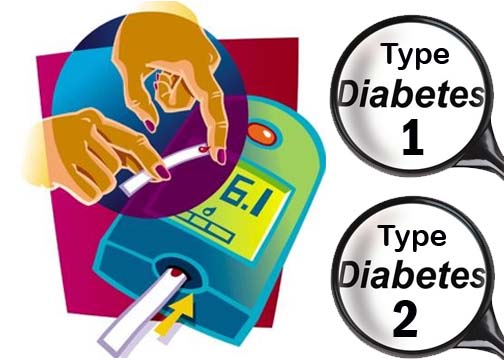Diabetic emergency
 Diabetes is a condition which is caused by an imbalance of sugar or glucose, in the blood. Because all human cells require sugars as food, the body takes in complex sugars in a normal diet. So the body's cells can use these sugars, an organ called the pancreas secretes a protein hormone called insulin, which attaches to the sugars. This allows the cells to recognise the sugars as food and absorb the necessary glucose.
Diabetes is a condition which is caused by an imbalance of sugar or glucose, in the blood. Because all human cells require sugars as food, the body takes in complex sugars in a normal diet. So the body's cells can use these sugars, an organ called the pancreas secretes a protein hormone called insulin, which attaches to the sugars. This allows the cells to recognise the sugars as food and absorb the necessary glucose.
Diabetes is due to an imbalance in the production of vital insulin. It is estimated that one in twelve Australians have diabetes and this rate is increasing. Diabetic emergencies appear in two forms hypoglycaemia and hyperglycaemia.
Hypoglycaemia
Hypoglycaemia or low blood sugar is a dramatic imbalance where the tissues, especially the brain cells, become starved of essential blood sugar. This condition is the more common type and especially dangerous as its onset is rapid. Further sugar deprivation can lead to the casualty becoming unconscious and death may follow within hours.
Common causes of low blood sugar levels include:
- Drinking alcohol without food
- Skipping or delaying meals and snacks
- Not eating enough carbohydrate (starchy) food
- Too much insulin or diabetes tablets
- Extra physical activity without eating extra food
Sign and symptoms:
- "Low blood sugar"
- Pale
- Profuse sweating
- Hunger
- Dizziness
- Tingling around the mouth and lips
- Slurred speech
- Confused or aggressive - may appear to be drunk
- Rapid pulse
- Shaking or seizures
- Tiredness or weakness
- Drowsiness may lead to becoming unconscious
Care and treatment:
- Call Triple Zero (000) for an ambulance
- If conscious try to have the casualty eat one of the following:
- 5 - 7 jelly beans
- 3 glucose tablets
- 150ml of soft drink (not diet)
- 2 - 4 teaspoons of sugar or honey
- 100ml of Lucozade
- Repeat if casualty does not improve after 5 -10 minutes
On recovery, assist with medication and encourage ingestion of carbohydrate (starchy) food such as a piece of fruit, glass of milk, sandwich or 2 - 4 dry biscuits
If unconscious: - call Triple Zero (000) for an ambulance - place casualty in recovery position
- If Glucagon is available it may be given in an emergency by a suitably instructed person
- Do not attempt to give insulin injection.
- Do not give any food or drink by mouth to an unconscious diabetic
Hyperglycaemia
Hyperglycaemia or high blood sugar, is an imbalance of blood sugar, which usually requires the affected person to supplement their insulin requirements by periodic injections of the hormone. A casualty who is unable to obtain this supplement is liable to collapse into a serious state called diabetic coma. This condition can develop over many hours or days.
Common causes of high blood sugar levels include:
- Sickness or Infection
- Stress
- Too much carbohydrate (starchy) food at once
- Not enough insulin or diabetes tablets
- Other tablets or medicines
Sign and symptoms:
- "High blood sugar"
- Hot, dry skin
- Feeling constantly thirsty
- Passing large volumes of urine, frequently
- Smell of acetone (nail polish remover) on the breath
- Drowsiness and extreme tiredness
- Blurred vision
- Weight loss
- Infections
- Unconsciousness, progressing to coma
Care and treatment:
- Definitive treatment for high blood sugar requires medical expertise
When in doubt if the casualty has low or high blood sugar, treat as for low blood sugar